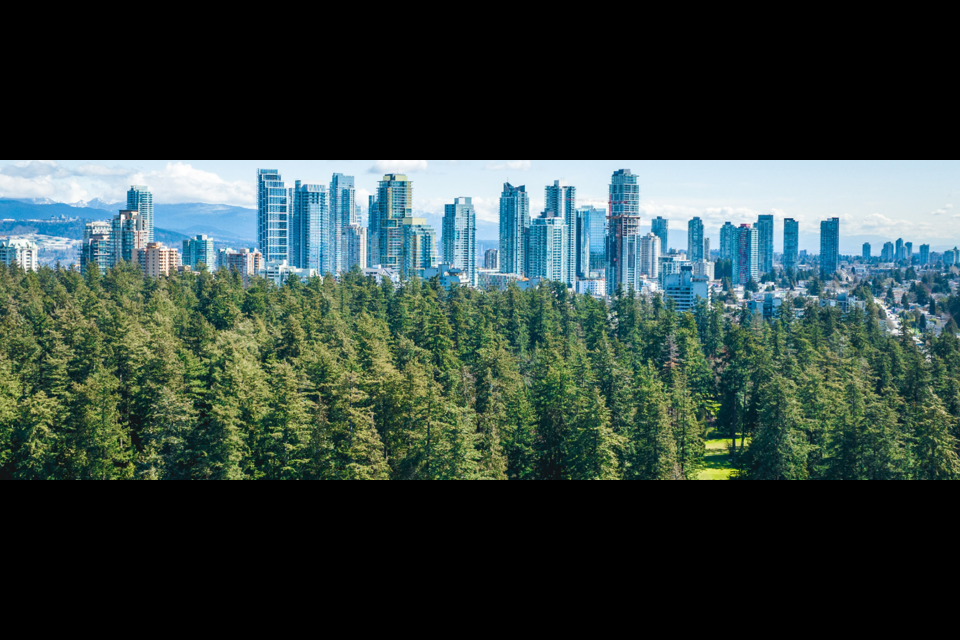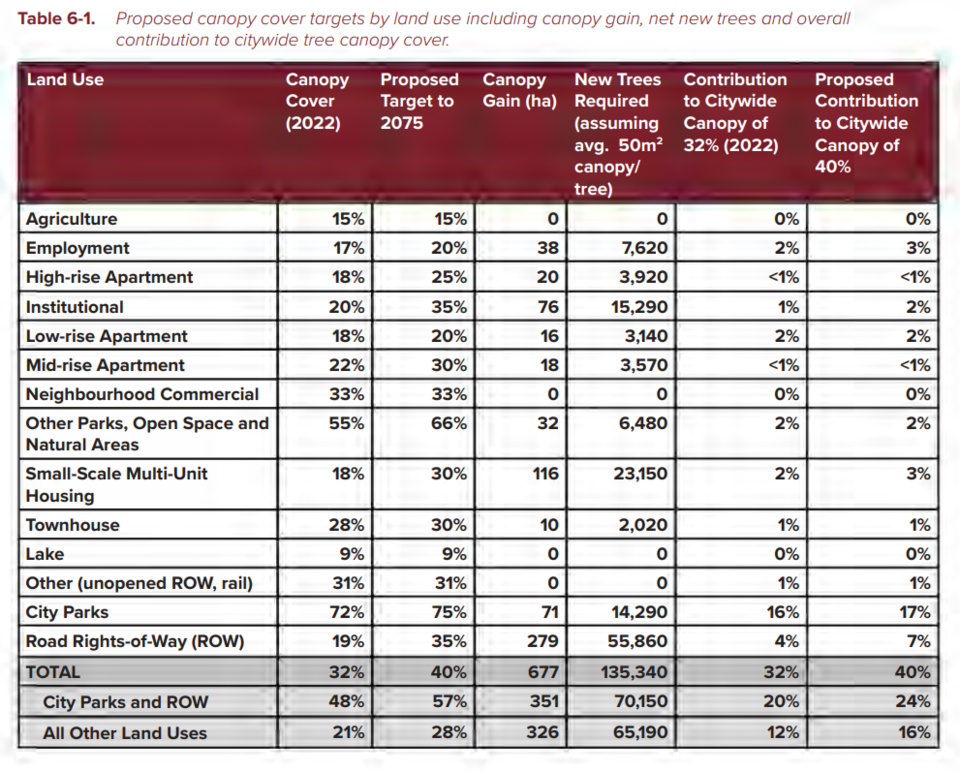A draft plan that suggested pushing back a tree-planting goal by 25 years raised concerns at a Burnaby council meeting last month.
The city wants to increase its tree canopy cover (the area of the city covered by trees when viewed from above) from 32 per cent to 40 per cent.
The city suggests a 40 per cent canopy cover will contribute to “community health and happiness,” noting that trees and forests provide a range of benefits from supporting residents’ mental health to regulating natural ecosystems, according to the draft urban forestry strategy presented to council Dec. 16.
The 40 per cent goal also matches the “aspirational target” for canopy cover in Metro Vancouver’s regional growth strategy.
But when should the city be expected to hit that goal?
City staff recommended the year 2075 – 25 years later than Metro Vancouver’s 2050 target.
The 40 per cent target is “ambitious” for Burnaby, staff said, “because it requires adding almost 700 hectares of tree canopy to the city.”
That would be like adding eight Central Parks to the city and about 135,000 medium-sized trees, according to the draft.
And future tree loss also has to be taken into account, whether lost from urban development, natural mortality or tree damage.
The city estimates about 325 hectares, or 11 per cent of Burnaby’s canopy, could be removed over the next 25 years, according to the draft.
Councillors question target
But Coun. Sav Dhaliwal raised concerns about extending the target to 2075.
He reminded staff that the city’s climate action framework relied on increasing tree planting in order to meet climate targets, including getting the city to zero carbon by 2050.
He asked how changing the tree canopy target would affect climate goals.
Staff said they would consult with the climate action team as the matter had not yet been considered.
Dhaliwal said staff should analyze the resources required to maintain the city’s commitments to climate action before councillors can “bless” the draft.
Coun. Alison Gu also criticized the draft plan.
“There are reasons for this 2050 target that were originally established,” she said.
She said the city needs to put interim targets and reporting requirements in place.
“We’re going to end up wishing that we had planted trees 20 years ago, 30 years ago, if we don’t keep ourselves accountable.”
She “strongly” urged that a 10-year tree planting plan be prioritized as a “quick start,” instead of as a midterm goal as currently scheduled in the draft.
Gu said she was frustrated by the draft plan presented by staff.
“It's still a plan to make more plans,” she said.
Burnaby trees by the numbers
The draft strategy includes the numbers of how many trees the city would have to plant on public and private land to meet targets, depending on two different tree mortality scenarios (a low 2.2 per cent mortality rate and a high 4.5 per cent mortality rate).
To achieve 40 per cent canopy cover by 2050:
- At 2.2% mortality: 20,000 trees needed per year
- At 4.5% mortality: 38,000 trees needed per year
To achieve 40 per cent canopy cover by 2075:
- At 2.2% mortality: 8,000 trees needed per year
- At 4.5% mortality: 18,000 trees needed per year
Those annual tree estimates are for urban areas, and don’t include restoration planting in already forested natural areas, according to the draft.
In a chart proposing canopy cover targets by land use, the city estimated it will require about 135,340 new trees to meet the 40 per cent target by 2075.
Carmen Gonzalez, deputy general manager of parks, noted the city currently does not have enough resources for those planting targets.
She said the parks department will make requests, including potential increases to the operating budget, through the city’s five-year financial planning process.
Burnaby’s canopy cover in 2022 was 32% or 2,900 hectares.
The draft urban forest strategy will go to public engagement this year.






